We are in Japan in 1861.
The Edo period is ending after more than 250 years of relative political stability and prosperity under the rule of the imperial family in Kyoto and the powerful samurai Tokugawa family established in Edo (present-day Tokyo). The shogun, theoretically a vassal of the emperor, runs in fact the Japanese empire. In 1854, the shogun signs a controversial Treaty of Peace and Amity with the United States, in a bid to address Japan’s technological backwardness vis-à-vis western countries. The emperor only reluctantly endorses the unequal Treaty which ends centuries of Japanese diplomatic isolationism. The issue further antagonizes supporters of the imperial court against those of the shogunate.
The emperor and the shogun cooperate pragmatically to ensure the cohesion and the future of Japanese empire. In 1861, the shogun Tokugawa Lemochi petitions the imperial court for a royal marriage with the princess Kazunomiya, sister of the emperor Komei.
Princess Kazunomiya
Born in 1846, princess Kazunomiya is engaged to Prince Taruhito at the tender age of 5. The royal engagement lasts until the imperial court needs to broker a political marriage with the Tokugawa family. The princess refuses bluntly to marry the shogun Tokugawa Lemochi, uneager to leave the imperial court in Kyoto for Edo. Her mother, uncle and other key imperial figures convince the emperor Komei to back the marriage petition under the condition that the shogunate will denounce the infamous 1854 Treaty of Amity. Princess Kazunomiya is warned that if she does not abide, her brother the emperor Komei will pushed to abdicate and she will be sent to a nun monastery.
Princess Kazunomiya finally agrees under the promise that she will enjoy the same lifestyle in Edo than in Kyoto, and that she will visit Kyoto annually. The emperor adds that the shogunate must revive Japan’s isolationist policy. The deal is done. Aged 15, princess Kazunomiya is to travel from Kyoto to Edo for her engagement ceremony in late 1861.
Nakasendo
As many prominent figures of that time, Princess Kazunomiya uses the Nakasendo route, the inland itinerary connecting the imperial capital and the Togukawa shogunate. Well built, equipped and maintained with no less than 69 post towns along its 534 km, the Nakasendo suits well to the transit of high figures of the empire. With Kazunomiya and other princesses passing there, the Nakasendo is nicknamed the ‘Princesses Highway’.
I was lucky enough to witness princess Kazunomiya and her suite on their way to Edo and passing through the post town of Tsumago-juku in the Kiso Valley. Reaching Tsumago by early morning, I observe the town post awakening in a stunning autumn light.
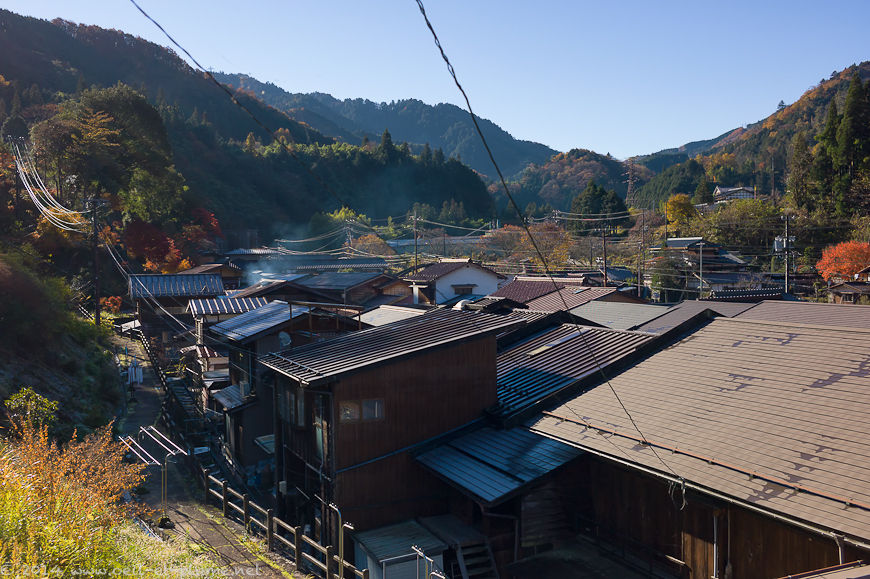
The air is deliciously clean and dry, and surprisingly cold. Harsh winter ahead, predict the locals. But for the time being, local people and cattle are busy preparing for the imperial cortege to pass through the town in a few hours.

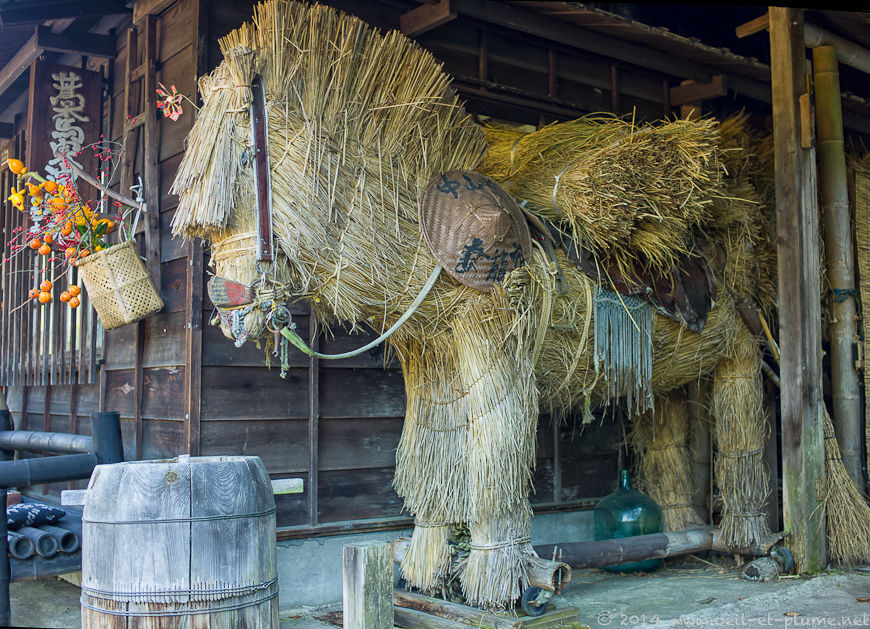
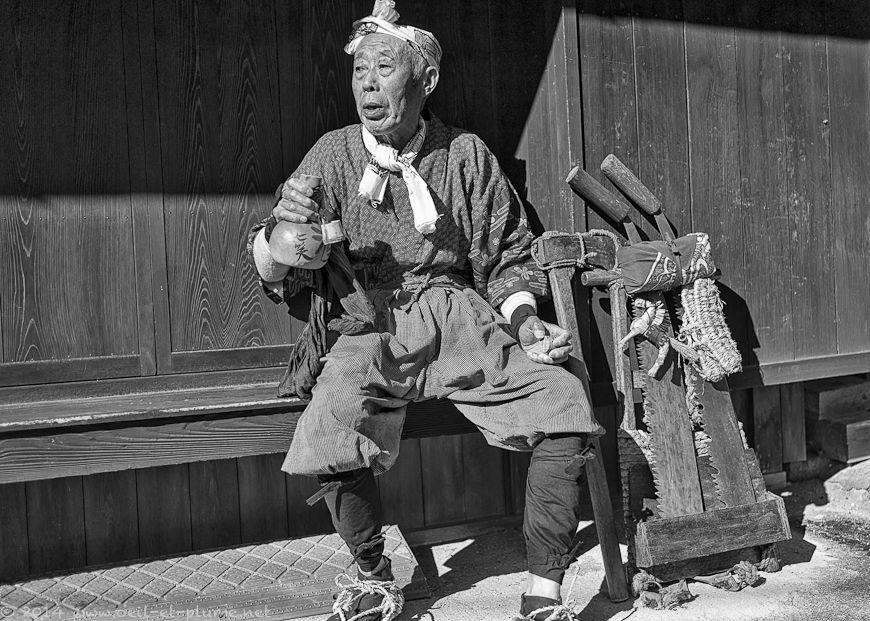
No less than 15,000 travelers from Edo passed through Tsumago some days ago to pick-up princess Kazunomiya and her suite in Kyoto. It took three days for the whole caravane to pass through the narrow street of the post town. At least 10,000 are expected to cross Tsumago with the princess today, I am told locally. Let’s enjoy the quietness of the post town for the time being.



Not for long, as by-standers are gathering along the narrow alley bordered by charming wooden hostels, shops and warehouses. The temperature rises ; the tension becomes palpable in the air. The forefront of the princess Kazunomiya’s convoy will arrive soon !
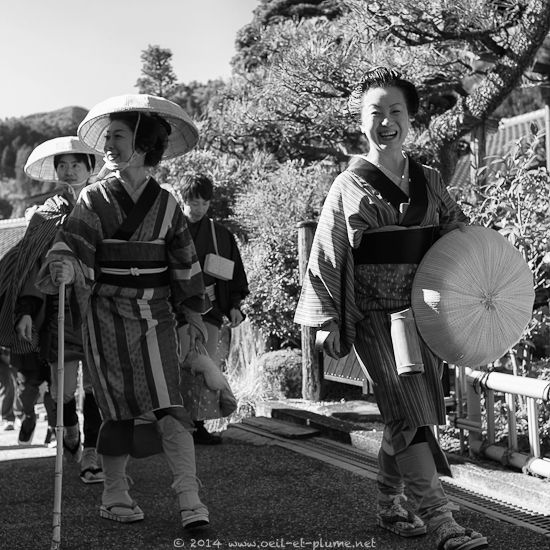
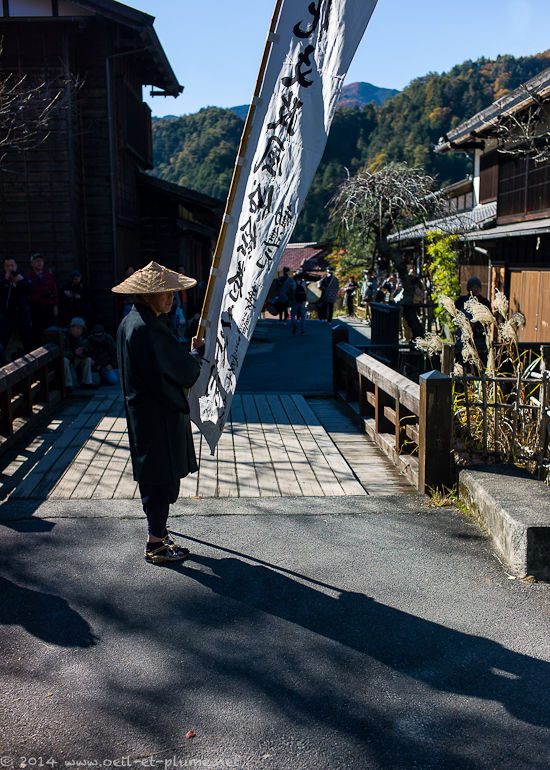
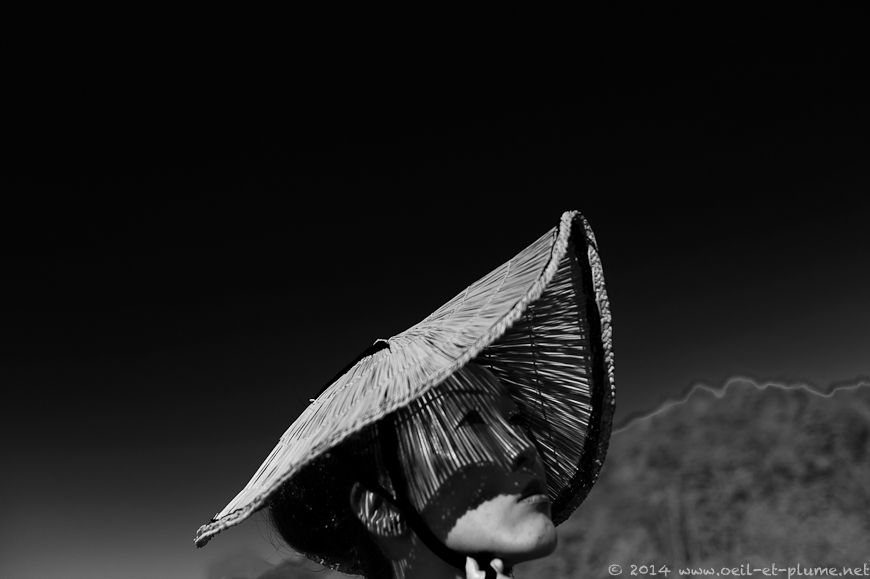
The Nakasendo route is one of the five main itinerary connecting Edo with all parts of the Japanese empire. At that time, the shogunate runs the Japanese feudal system through over 200 daimyo (governors) enjoying a large degree of administrative autonomy in their respective jurisdictions.
Good road connections between the various components of the Japanese federation are essential for the shogunate to ensure the stability of the empire through a swift transit of civil servants and official communication. Daimyos travel along the Nakasendo on a regular schedule, as do samurai on official missions. Governmental messengers, runners or horsemen, use to rush along the road with a variety of official documents. Post towns such as Tsumago provide food, accommodation and transportation services to these governmental officials. Here are they.
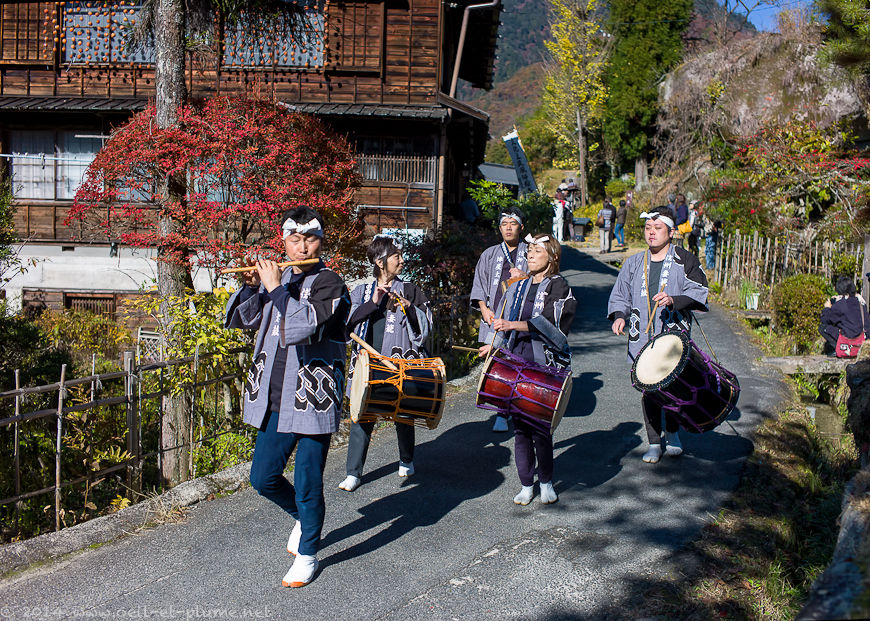


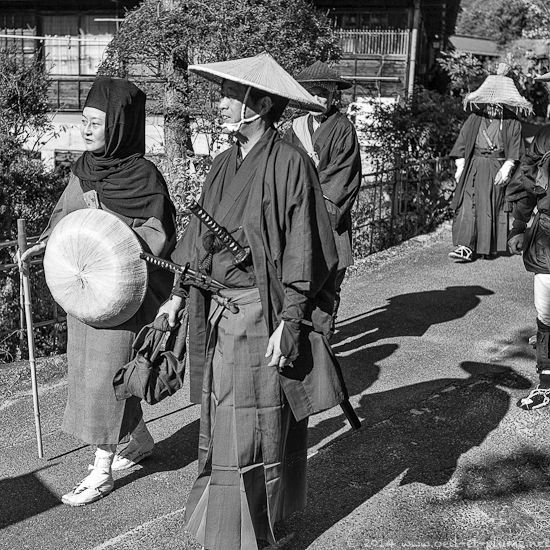
Over time, more and more private individuals use the main road connections of the Japanese empire, be they merchants, pilgrims or commoners in search of employment. Governmental checkpoints and spies are many on the way, as post towns help also controlling the transit of private individuals in a time of booming domestic internal trade and increasing geographical mobility.
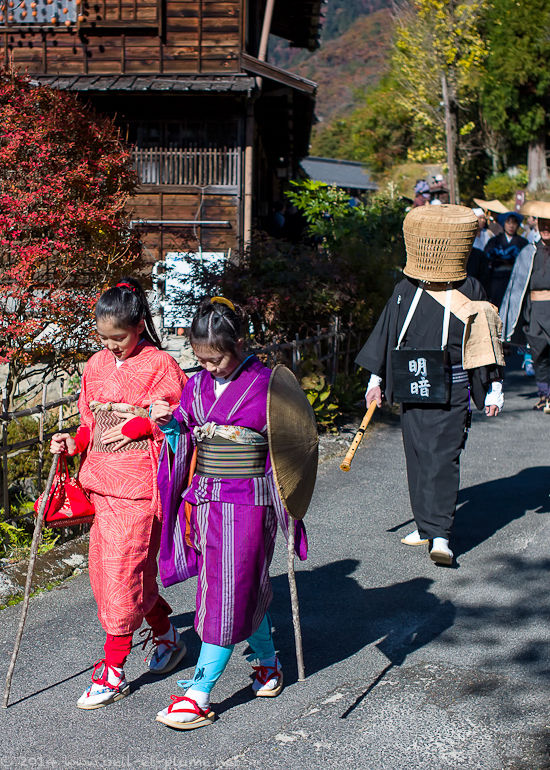



Social mobility is not promoted however. During the Edo period, the social order relies on inherited positions rather than on personal merits. Services available to travelers in the post towns depend primarily on their social status. Over time however, the wealthiest merchants start buying high-end services in post towns, undermining the Confucian social division imposed by the feudal government and the imperial family. The ferments of the 1868 Meiji Revolution are already perceptible.
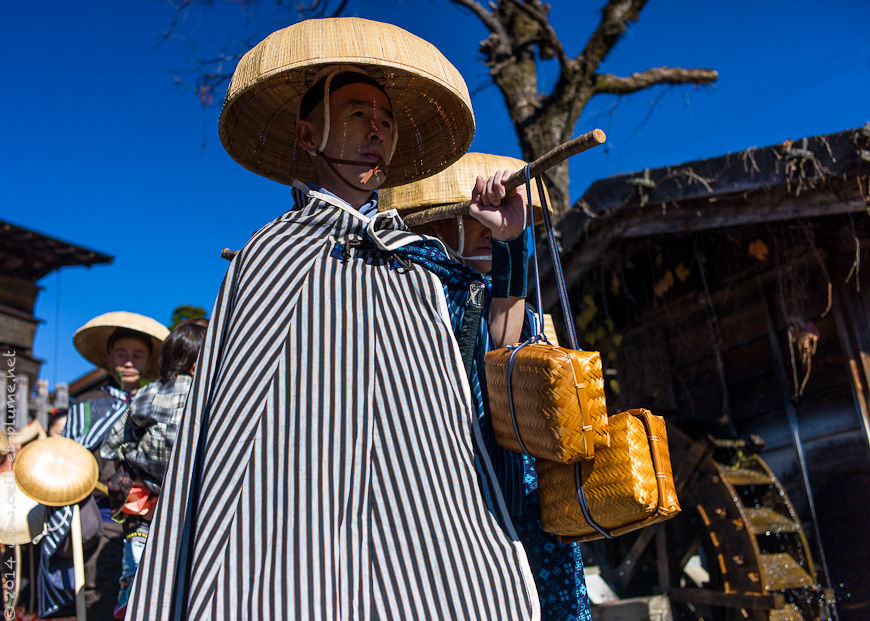

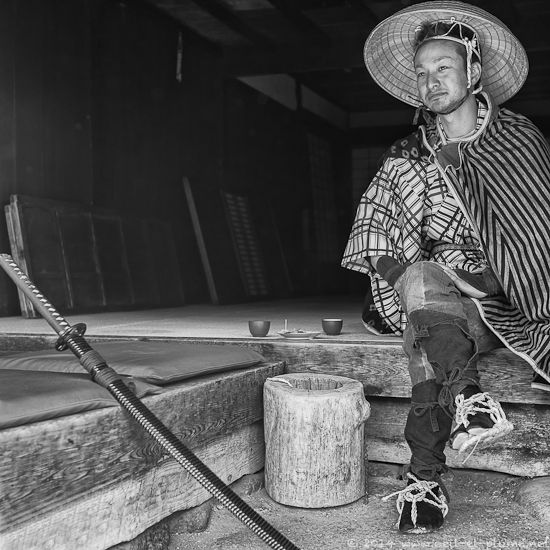
Princess Kazunomiya is in sight! She is travelling with her mother, dozens of attendants and countless porters and pieces of luggage. I struggle to approach the future fiancée, as security forces heavily cordon her and her entourage. The crowd cheers her heartily and loudly, while the princess smiles and waives hand back to the audience. Delightful moment.
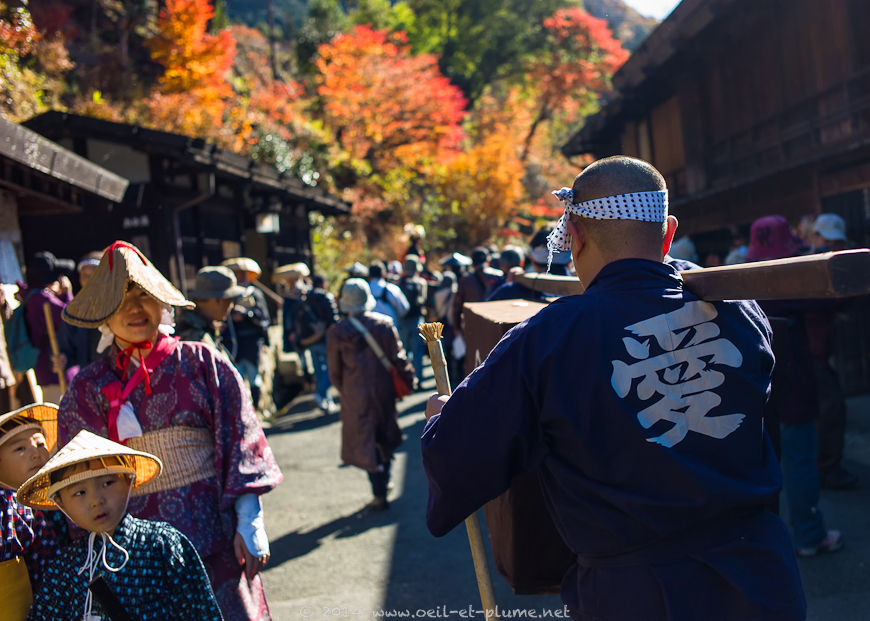
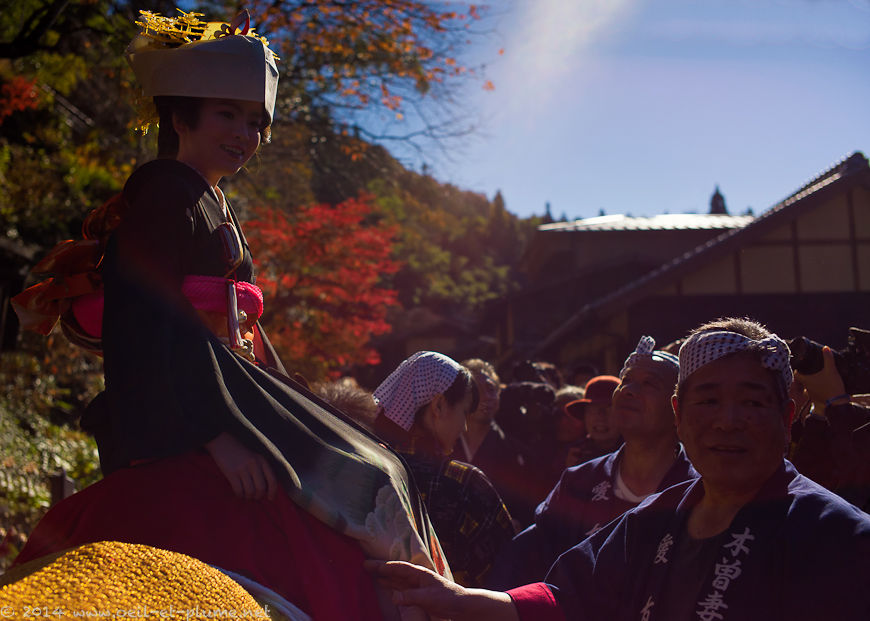
Not everybody is happy about this future royal marriage between the imperial princess and the Tokugawa shogun tough. Many partisans of the imperial family criticize the political marriage that will likely only further undermine the political power of the imperial court vis-à-vis the Tokugawa clan. Many commoners are angry because of the forced labor and the requisition of their horses imposed on them during the harvest season to facilitate princess Kazunomiya’s travel on the Nakasendo.
In a hurry, princess Kazunomiya does not stop over in Tsumago. Upon her departure, the main road of the post town clears up; the atmosphere eases; local residents relax. Time to rest, time for food and drink. The rest of the day flows serenely until dusk. What a day!
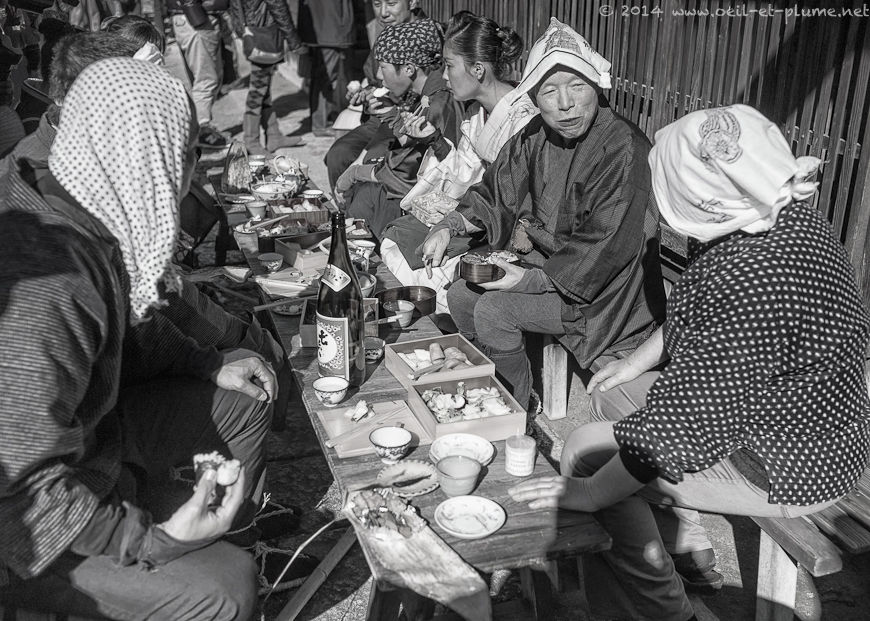
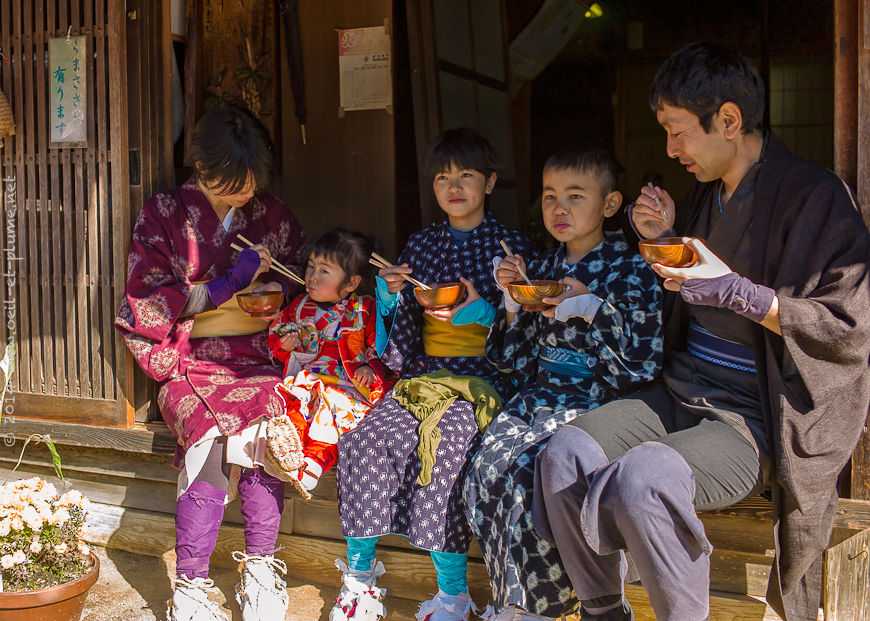


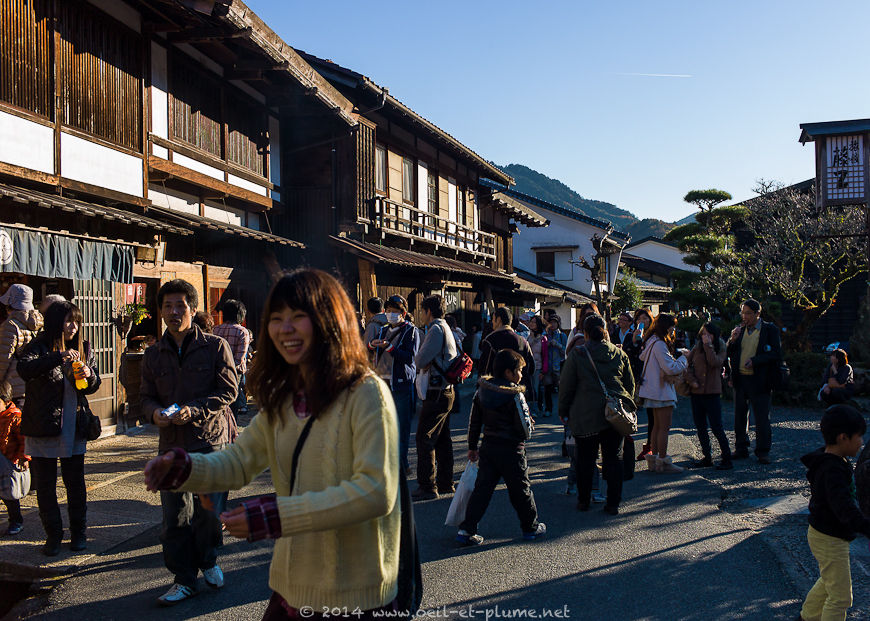

Despite her hurry in Tsumago, it takes to the princess Kazunomiya no less than 26 days to travel from Kyoto to Edo in late 1861. She marries the shogun Tokugawa Lemochi as planned the next year.
On my side, I feel blessed thrice by my Nakasendo experience. Blessed to have reached Tsumago on the very day of the annual celebration of the historical transit of the princess Kazunomiya. Blessed also to have found on the spot a nice accommodation in the core of the charming post town despite the high level of affluence. Blessed finally to have trekked the 8-km section of the Nakasendo from Tsumago and Magome on the following day.
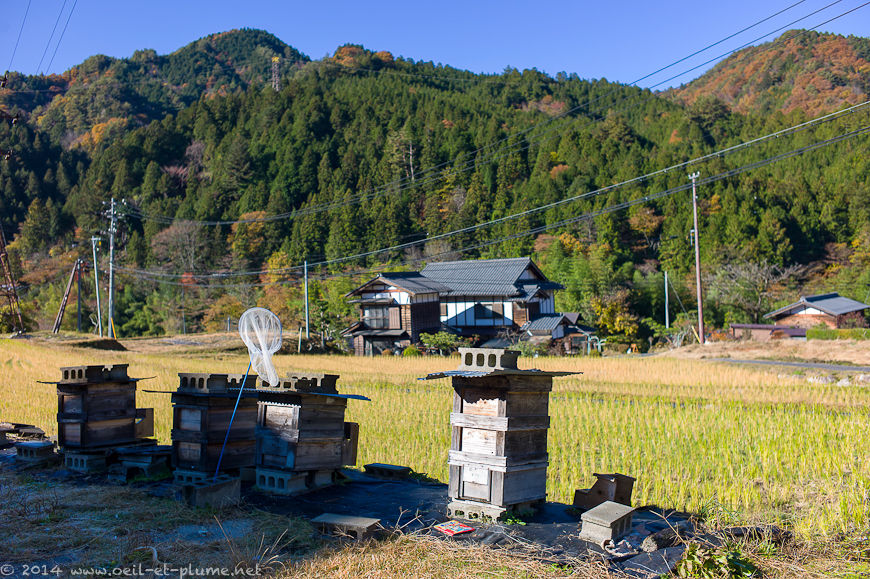

I leave the village early in this beautiful light that reward the early birds. The path is easy, busy and straightforward in comparison with the Kumano Kodo. Thus, the forest of the Kiso Valley hosts bears. Don’t worry, since there are bells hung all the way to keep at bay the plantigrades. Japanese connoisseurs trek in the area with a bell belt around their hips or their chest.
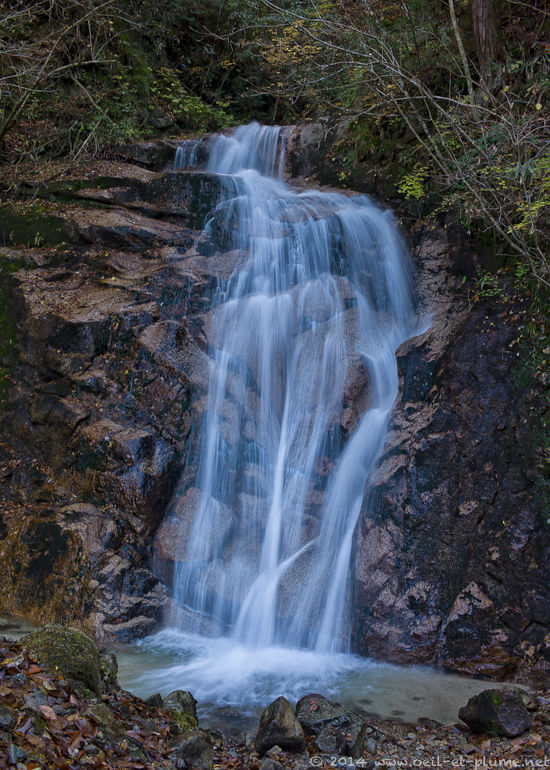

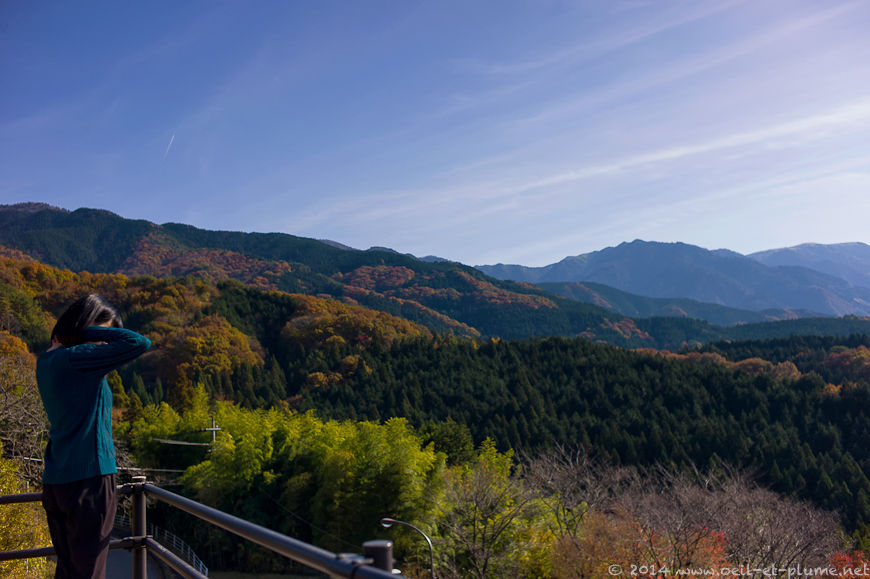
It is time now to leave the Kiso Valley and the princess Kazunomiya. Worth mentioning that the union between the princess and the shogun Tokugawa Lemochi in 1862 does not bring the political yields anticipated, as the rift between supporters of the imperial court and the shogunate widens in the following years to culminate in the Meiji Revolution in 1868.
If not politically successful, how happy has been Kazunomiya’s marriage? Difficult to know. It was short, for sure. Kazunomiya’s mother, husband and brother die sadly between 1865 and 1866. Devastated, Kazunomiya turns Buddhist nun only to succumb to beriberi in 1877, aged 31. Bleak destiny for a princess indeed.
Cheers,